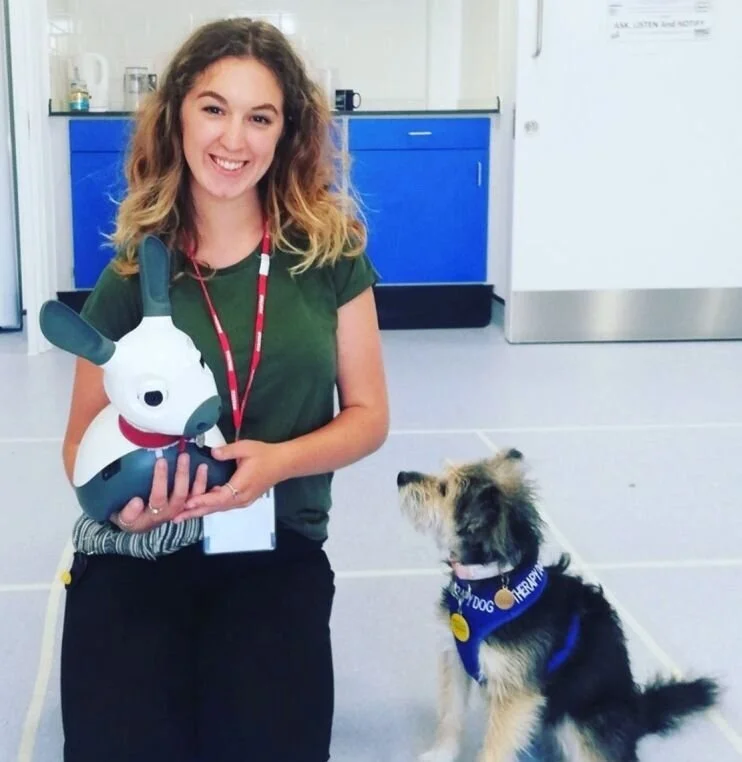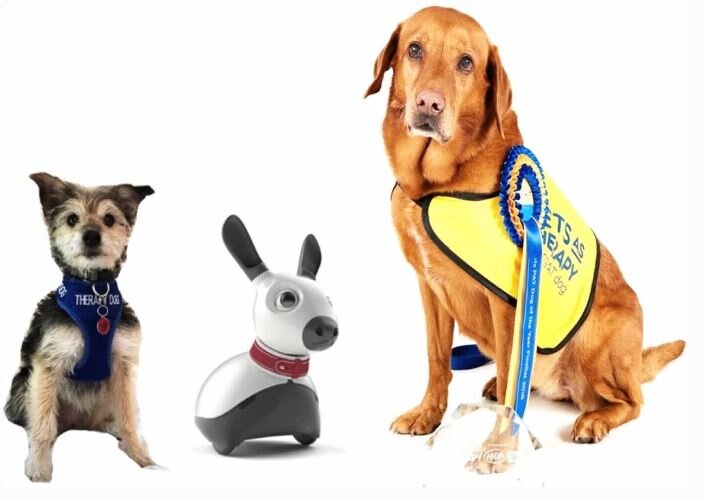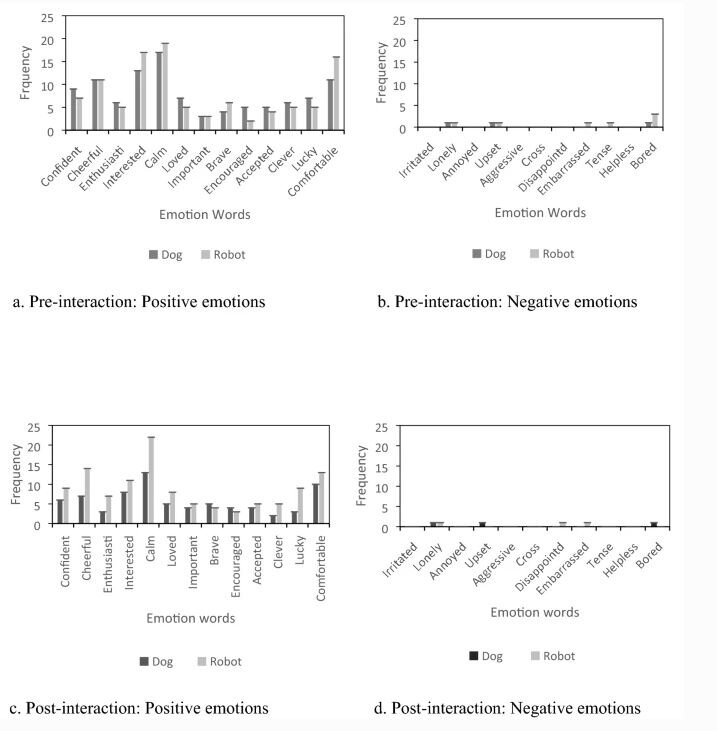The original source of this post can be found on the University of Portsmouth blog.
Researchers in the Department of Psychology at the University of Portsmouth have found that robotic animals may be a better alternative to real-life therapy dogs.
Study Title: Children’s Evaluations of a Therapy Dog and Biomimetic Robot: Influences of Animistic Beliefs and Social Interaction
Authors: Olivia Barber, Eszter Somogyi, Anne E McBride (University of Southampton), Leanne Proops
Study Paper: The International Journal of Social Robotics
The Challenge
Pet or animal therapy, especially the use of dogs is a commonly known practice for successfully calming, soothing and re-engaging children, young people, the elderly, and those that consistently experience bouts of anxiety and stress. However, the downside of using a real animal can often include triggering allergies, transmitting disease, along with the responsibility of ensuring that the animals themselves are also well taken care of by the owner/s. There will also be some people that simply do not like animals – a tough crowd to please indeed.
Olivia Barber, first author and PhD student, MiRo-E and the 3 year old therapy dog. (Image taken from the University of Portsmouth).
Olivia Barber, who owns a therapy dog herself, and is first author of the paper, said: “Although lots of people in schools and hospitals benefit greatly from receiving visits from a therapy dog, we have to be mindful of the welfare of the therapy dog. Visits can be stressful and incredibly tiring for therapy dogs, meaning that we should be exploring whether using a robotic animal is feasible.”
This triggered the University of Portsmouth to explore the interactions of a therapy dog versus using a Biomimetic Robot. Could an animal-like robot provide the same benefits of a real animal but without the concerns outlined above? How do the two compare? Can a robot really meet the expectations of a real dog?
Here’s how MiRo-E came into play.
Methodology
Looking at children alone, the study asked 11–12-year-old pupils from a secondary school in West Sussex (UK) to complete a questionnaire about their beliefs and attitudes towards dogs and robots before engaging in two separate free-play, non-therapeutic sessions with MiRo-E and two real-life therapy dogs – a 3-year-old Jack Russell crossed with a Poodle and a 12-year-old Labrador-retriever. The researchers then observed the social interactions and behaviours between the children and the dogs and MiRo-E and compared and analysed the results from the questionnaires to their observational findings.
From left to right: A 3 year old Jack Russell x Poodle, MiRo-E and a 12 year old Labrador. (Image taken from the University of Portsmouth)
Results
It’s possible! The researchers found that whilst the children spent a similar amount of time stroking MiRo-E and the dog; overall, they spent more time interacting with MiRo-E. Interestingly, whilst the self-reports showed that the children preferred the session with the living dogs and that enjoyment was high; more positive emotions were reported following interaction with MiRo-E.
Their pre-existing feelings about animals were also an important factor in their evaluation of their enjoyment of the dog or robot. If they were positive, then they were likely to enjoy their interactions with the dogs and MiRo-E. This suggests that MiRo-E can provide a useful comparison to therapy dogs and may be a suitable alternative for use in interventions with children.
Frequency of a positive and b negative emotion words selected before interaction and c positive and d negative emotion word selected after interaction with the dog and the robot. (Image taken from the University of Portsmouth).
Dr Leanne Proops, who supervised the study said: “We know that real dogs can provide calming and enjoyable interactions for children - increasing their feelings of wellbeing, improving motivation and reducing stress.
This preliminary study has found that biomimetic robots - robots that mimic animal behaviours - may be a suitable replacement in certain situations and there are some benefits to using them over a real dog.”
She adds: “This is a small-scale study, but the results show that interactive robotic animals could be used as a good comparison to live dogs in research, and a useful alternative to traditional animal therapy.”
MiRo-E can be just as effective and may even be a better alternative to a therapy dog! (Image taken from the University of Portsmouth)
The study which has been promoted on the University of Portsmouth blog also mentions that: “There are lots of positives to using a robotic animal over a therapy dog. They can be thoroughly cleaned and can work for longer periods of time. They can also be incredibly lifelike, mirroring the movements and behaviour of a real animal, such as wagging their tails to show excitement, expressing “emotions” through sounds and colour, turning their ears towards sounds and even going to sleep.”
The researchers at the University of Portsmouth go as far as saying that MiRo-E can be: “Just as effective and may even be a better alternative to a therapy dog!” I don’t think we could've said it better ourselves.
Lastly, Olivia added: “We are glad that we chose such a great robot for our study! We have been delighted with the help and support that we have received from the team at Consequential Robots.”
Read the University of Portsmouth blog post here.
Read the study article here.
If you are considering a robotic device for your research project, simply click the button below.





